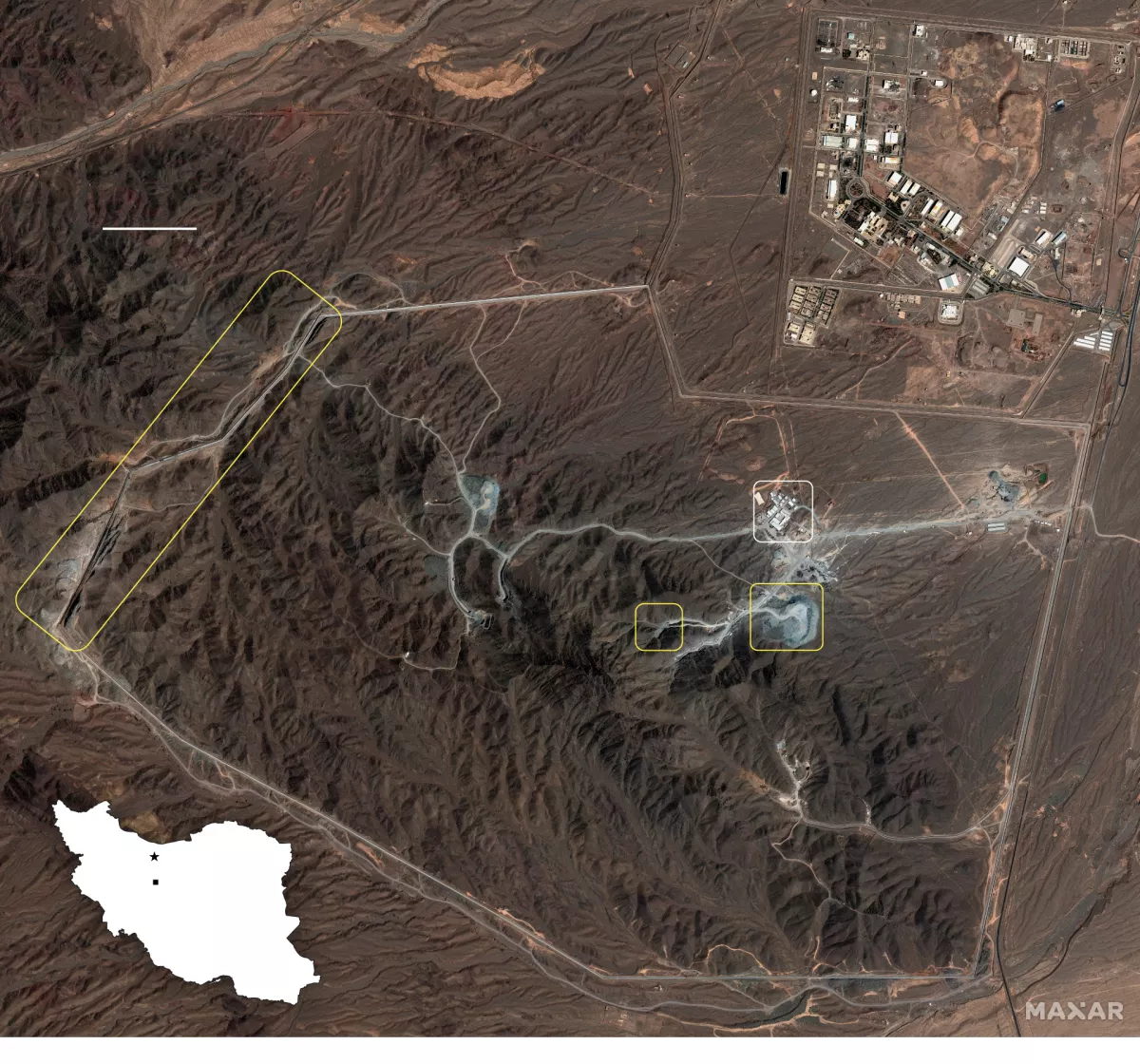WP: Iran building mysterious underground facility amid nuclear tensions
Iran has stepped up construction at a mysterious underground site known as Pickaxe Mountain, raising concerns that Tehran has not fully halted work on its suspected nuclear weapons program, according to satellite imagery reviewed by the Washington Post and independent analysts.
Located about a mile south of the Natanz nuclear complex in the Zagros Mountains, the site has been under excavation since 2020. Its purpose remains unclear, with international inspectors never having visited. Rafael Mariano Grossi, director general of the International Atomic Energy Agency (IAEA), said Tehran rebuffed questions about the facility earlier this year.

Analysts estimate the tunnels under Pickaxe Mountain reach 260 to 330 feet deep—potentially deeper than Iran’s Fordow facility, which was struck with earth-penetrating bombs by U.S. warplanes. The site covers roughly a square mile, with tunnel entrances on both the east and west sides.
Iran initially said the facility would house a centrifuge assembly plant to replace one destroyed in 2020, but its size and depth have led experts to speculate it could serve as a covert enrichment site or a secure storage location for near-weapons-grade uranium.
“The presence of dump trucks, trailers, and other heavy equipment … indicates continued construction and expansion of the underground facility,” said Joseph Rodgers, fellow at the Center for Strategic and International Studies.
Since U.S. strikes on June 22, satellite imagery shows Pickaxe Mountain has been fortified: 4,000 feet of security wall added, tunnel entrances reinforced, and excavated spoil piles growing—signs of ongoing tunneling.
“The fact they’re continuing to build this is significant,” said Sarah Burkhard of the Institute for Science and International Security.
Tehran and the IAEA reached an agreement on September 9 allowing inspections of all nuclear sites, but Iran has sent mixed signals about its next steps, raising questions over its compliance.
Iranian President Masoud Pezeshkian urged diplomacy, warning that rebuilding nuclear sites could invite further U.S. strikes. Ayatollah Ali Khamenei retains final authority on nuclear matters.
In an interview with PBS’s Frontline, Ali Larijani, secretary of Iran’s Supreme National Security Council, said:
“No, nothing. We haven’t abandoned any of those locations. But in the future they could possibly continue to run as they currently do or be shut down.”
U.S. and Israeli strikes in June caused severe damage at Natanz, Fordow, and Isfahan, destroying almost 22,000 centrifuges. Analysts say Iran is “playing it cool,” cautious of another attack.
“They seem to be playing it cool,” said Jeffrey Lewis of the James Martin Center for Nonproliferation Studies.
The IAEA reports that Iran had nearly 900 pounds of uranium enriched to 60 percent purity before the attacks, but its current location is uncertain.
Grossi told PBS News Hour that the material is likely buried underground. CIA Director John Ratcliffe noted in June that most enriched uranium is trapped under rubble at Isfahan and Fordow.
Kelsey Davenport of the Arms Control Association warned that Iran could pursue a more secretive underground path to a nuclear weapon if it prioritized stealth over speed.
“Iran still has the capacity to reconstitute fairly quickly if they make the decision to,” she said.
By Sabina Mammadli








